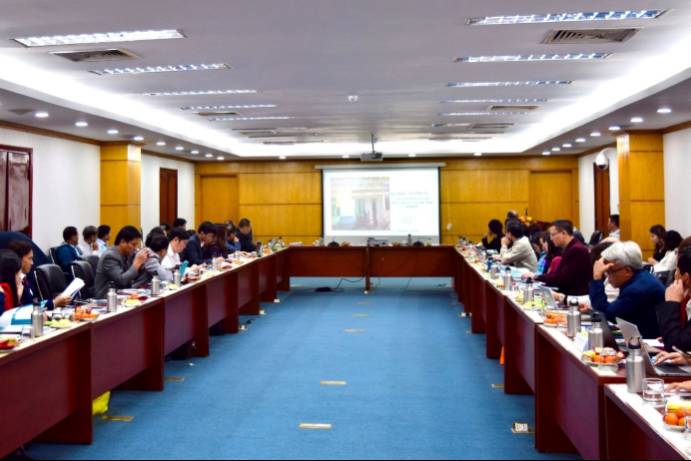On January 17, the Department of Nature Conservation and Biodiversity (Ministry of Natural Resources and Environment) held a Closing Ceremony for the Project "Integrating Natural Resource Management and Biodiversity Conservation Objectives into Socio-economic Development Planning and Management of Biosphere Reserves in Viet Nam " (BR Project).
The BR Project, implemented in 2019-2024, is funded by the Global Environment Facility (GEF) through the United Nations Development Programme (UNDP), aiming to address three barriers including: Legal framework for the operation of World Biosphere Reserves; Institutions, and management capacity of World Biosphere Reserves; awareness of relevant agencies and stakeholders about threats caused by biodiversity loss, thereby integrating biodiversity into socio-economic development planning. The Department of Nature Conservation and Biodiversity is the project owner, coordinating with three co-implementing agencies: the Western Nghe An Biosphere Reserve Management Board, Cu Lao Cham - -Hoi An, and Dong Nai.
Mr. Patrick Haverman, Deputy Representative of UNDP Viet Nam , assessed that the BR Project has a bold ambition to harmonize biodiversity conservation with sustainable development, proving that nature and people can develop together.
After 5 years, the project has supported the effective management of more than 1.266 million hectares of essential ecosystems, restored 4,005 hectares of degraded forests, and protected 62,940 hectares of forests with high conservation value.
 General view of the event
General view of the eventRegarding species conservation, the project also recorded an increase in the population of some key species, such as coral reefs in Cu Lao Cham - Hoi An; Gaur (Bos gaurus) and Golden-crested Gibbon in Dong Nai; and White-cheeked Gibbon in Western Nghe An.
At the same time, the project also ensures socio-economic development for people, directly benefiting more than 3,125 households, equivalent to more than 11,500 community members, with 40% of participants being women. Through sustainable livelihoods such as community-based ecotourism, indigenous plant production, and environmentally friendly livestock farming, household income has increased by at least 20%, enhancing community resilience and environmental management.
Capacity building and awareness raising are also integral to the project's success. More than 4,200 individuals, of whom 44% are women, have been trained in biodiversity-friendly activities, equipping communities with the knowledge and skills needed for sustainable resource management.
In addition, the project has supported the integration of Biodiversity Impact Assessments (BIA) into 100% of new development projects in three biosphere reserves. These advances demonstrate the power of innovative and holistic approaches to conservation. These are telling figures, marking outstanding results in efforts to protect ecosystems vital to nature and human well-being.